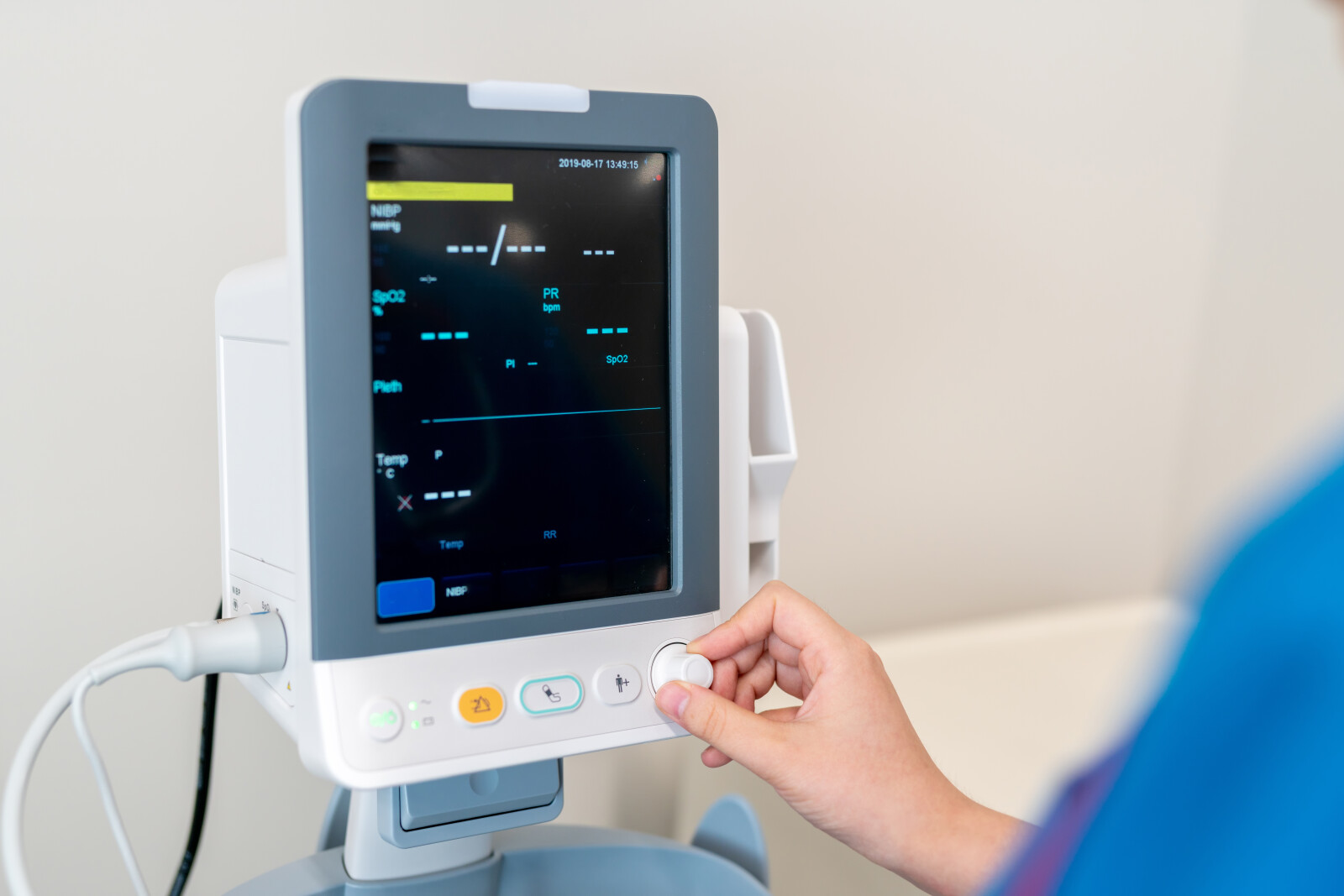Bair Hugger Complications
Despite widespread usage in healthcare, Bair Hugger warming devices have recently come under scrutiny for potential health risks. This article explores these allegations, examining scientific studies and expert opinions, to understand the potential complications associated with these devices. It aims to provide readers with the necessary knowledge to make informed healthcare decisions, shedding light on the contentious recall of Bair Hugger blankets in 2018 and the FDA's stance on their use.

Key Takeaways
- MRSA is a strain of common bacteria resistant to antibiotics, and MRSA infections can be life-threatening and require immediate medical attention.
- Studies have shown that forced-air warming (FAW) devices, such as Bair Huggers, can cause changes in air currents in operating rooms and may increase the risk of contamination during surgery.
- 3M, the company that acquired Bair Hugger, has defended the devices against claims of increased infection risks, citing numerous studies and clinical trials.
- The FDA recommends the use of FAW devices like Bair Huggers, stating that they have a successful track record in reducing bleeding, speeding up recoveries, and decreasing infection risk.
Understanding Bair Hugger Devices
Bair Hugger devices, a type of forced-air warming (FAW) system, have been the subject of extensive research and legal scrutiny due to potential complications and risks associated with their use. These FAW systems are implemented in medical procedures to maintain normothermia in patients, but concerns have been raised about their efficacy and safety. Particular attention has been given to the efficacy of alternative warming devices in medical procedures. These alternatives may provide similar benefits with less potential risk to patients. Concurrently, the role of healthcare providers in preventing Bair Hugger complications is of utmost importance. Their understanding and adherence to safety protocols can significantly reduce potential complications, thereby ensuring the overall safety and well-being of the patients.
The Working Principle of Bair Huggers
Understanding the functionality of Bair Huggers involves a comprehensive grasp of the principles of thermodynamics, and it is essential to note their operation heavily relies on forced-air warming technology. These devices function by drawing in ambient air, heating it, and then circulating the warmed air through a flexible blanket draped over the patient. This technological advancement provides an efficient mode of maintaining a patient's body temperature during surgery, thereby extending its potential benefits. The warm air enhances patient comfort and reduces the risk of hypothermia, a common complication during surgical procedures. However, while acknowledging these benefits, it is also essential to be cognizant of potential risks such as infection, which has been a contentious issue in recent years.
Common Uses of Bair Hugger Devices in Medical Procedures
While Bair Hugger devices are widely utilized across a range of surgical procedures, their most common applications include maintaining patient body temperature during orthopedic surgeries, general anesthesia procedures, and intensive care treatments. The benefits of using Bair Huggers are considerable, with the device offering effective, non-invasive temperature management, a key factor in reducing surgical complications and improving patient comfort. However, concerns over potential complications have prompted exploration of alternatives to Bair Huggers. These include resistive heating devices or intravenous fluid warmers, which offer similar temperature management benefits without the potential risks associated with forced-air warming systems. Despite the emergence of these alternatives, the Bair Hugger remains a prominent tool in contemporary surgical practice.
The Controversy Surrounding Bair Hugger Devices
The medical community's trust in the safety and efficacy of Bair Hugger devices has been shaken by mounting litigation and scientific debate, causing a significant controversy in the field of patient warming during surgical procedures. Recent research findings have cast doubt on the safety of these devices, suggesting a potential link to increased risks of surgical site infections. Meanwhile, patient testimonials have provided a human face to these potential risks, with numerous patients alleging severe complications following surgeries where Bair Hugger devices were used. The controversy has spurred an ongoing discussion about the potential risks and benefits of these devices, and has underscored the importance of rigorous scientific research in ensuring patient safety.
Potential Risks and Complications Associated With Bair Huggers
One must be aware that certain risks and complications could potentially arise from the use of Bair Hugger devices during surgical procedures. Patient testimonials have reported instances of post-operative infections, allegedly caused by the use of Bair Huggers. These adverse events, including deep joint infections, sepsis, and even amputations, have led to potential legal implications. A number of lawsuits have been filed against 3M, the manufacturer of Bair Huggers, claiming that the company failed to warn about these risks. These legal actions argue that the forced-air warming system can disrupt the sterile field in the operating room, leading to an increased risk of infection. As such, understanding these potential risks and complications is crucial for both patients and healthcare providers.
Deep Dive Into the Science: How Bair Huggers Might Increase Infection Risk
To comprehend the potential infection risk associated with Bair Huggers, a comprehensive analysis of the underlying science is necessary, and this involves understanding both the operation of the device and the nature of the surgical environment. Bair Huggers, forced-air warming devices, function by blowing warm air over the patient's body, which may inadvertently disperse airborne contaminants present in the operating room. Risk factors, such as the dispersal of these airborne contaminants, could potentially increase the risk of surgical site infections. An effectiveness analysis of Bair Huggers indicates that while they effectively maintain patient temperature, the potential for increased infection risk warrants further investigation. Therefore, a balance between maintaining patient warmth and minimizing infection risk is crucial in determining the overall safety and efficacy of Bair Huggers in surgical settings.
Patient Experiences With Bair Hugger Complications
Numerous patients who underwent surgeries involving Bair Hugger devices have reported complications, and their experiences highlight the potential risks associated with this warming technology. Patient testimonials often depict a struggle with post-surgical infections, leading to extended hospital stays, additional treatments, and even long-term health issues. These experiences not only affect the patients but also the healthcare providers who must manage these complications. Healthcare provider perspectives largely echo the concerns raised by patients, pointing out the difficulty in treating these infections and the added stress on the healthcare system. Some have questioned the continued use of Bair Hugger devices, advocating for alternatives to mitigate potential complications. The interplay of patient experiences and healthcare provider perspectives paints a complex picture of the Bair Hugger complication issue.
Legal Battles: Lawsuits and Allegations Against Bair Hugger Manufacturers
Since the emergence of complications associated with Bair Hugger devices, a multitude of legal battles, including lawsuits and serious allegations, have been launched against the manufacturers of these warming systems. The Bair hugger legal implications involve numerous patients claiming that the device caused post-surgical infections, leading to severe health problems. Allegations have centered on the manufacturers failing to warn the medical community and patients about potential risks. Cases claim that the company knew about the risks but chose to conceal the information, thereby failing in their duty of Bair hugger manufacturer accountability. As these cases proceed, the legal implications will continue to evolve, potentially setting a precedent for similar cases in the future.
The Role of Regulatory Bodies in Bair Hugger Controversies
In the midst of the controversies surrounding Bair Hugger, regulatory bodies such as the Food and Drug Administration (FDA) play a critical role, both in terms of assessing the safety of the device and in regulating its use in the healthcare sector. They scrutinize clinical studies, monitor adverse event reports, and issue recalls if necessary. Their decisions carry significant legal implications, potentially influencing lawsuit outcomes. The FDA, after reviewing available data and guidelines, has to date supported the use of Bair Hugger, despite ongoing legal battles. They assure that they will continue active surveillance and update their recommendations if new substantial information arises, demonstrating the crucial role of regulatory bodies in protecting patient safety and mediating medical disputes.
A Look at Alternatives to Bair Hugger Devices
Despite the widespread use of Bair Hugger devices, it is essential to explore alternatives for patient warming, which can provide similar benefits without the associated complications. Alternative warming methods include electric blankets, water-filled mattresses, and circulating-water garments. Comparative studies on warming devices have shown that these alternatives can maintain patient temperature just as effectively as Bair Hugger devices. However, their impact on operating room contamination levels and infection rates remains less clear. Further research is needed to establish their safety profiles and comparative efficacy. The choice of a patient warming method should always be guided by individual patient needs and clinical contexts, with an eye towards minimizing potential complications.
Steps to Mitigate Bair Hugger Complications in Surgical Procedures
The effective mitigation of Bair Hugger complications in surgical procedures necessitates a comprehensive understanding of the device's operation, potential risks, and the implementation of stringent infection control measures. Among these measures, the efficacy of alternative warming methods should be considered. Several studies have demonstrated the safety and effectiveness of other warming devices that may not carry the same risks as the Bair Hugger.
Moreover, adherence to the best practices for preventing infection in surgical procedures is paramount. This includes maintaining a sterile environment, ensuring proper hand hygiene, and carefully monitoring the patient's condition before and after surgery. Regular cleaning and maintenance of the Bair Hugger device can also contribute to reducing the risk of complications. By following these steps, healthcare providers can ensure patient safety and positive surgical outcomes.
The Impact of Bair Hugger Complications on Patients and Their Families
While patients endure the direct physical consequences of Bair Hugger complications, their families also face significant emotional and financial strain. The pain, recovery time, and potential long-term health issues can lead to job loss, financial distress, and emotional turmoil. Patient advocacy plays a crucial role in providing support, driving awareness and pushing for improvements in safety protocols. However, when complications arise, families often find themselves grappling with the legal implications. They may need to seek legal counsel to understand their rights and potential for compensation. This can be a daunting task, adding further stress to an already challenging situation. Hence, the impact of Bair Hugger complications extends far beyond the physical, deeply affecting patients and their families alike.
The Future of Bair Hugger Devices Amid Rising Concerns
In light of increasing concerns regarding Bair Hugger devices, their future within the medical field is now being closely examined. The future implications of Bair Hugger devices in healthcare settings are under scrutiny due to potential complications linked to their use. These concerns have sparked a debate on the safety and efficiency of these warming devices in surgical procedures. An essential part of this discourse is considering the potential long term effects of Bair Hugger complications on patient outcomes. Serious infections, such as deep-joint infections, have been associated with these devices, leading to prolonged hospital stays, additional surgeries, and in some cases, permanent disability. As such, the future use of Bair Hugger devices hinges on ensuring their safety and efficacy, balancing patient comfort with the potential risks involved.
Expert Opinions on the Safety of Bair Huggers
Amid contentious debates regarding the safety of Bair Huggers, expert opinions, drawn from extensive research and clinical experience, provide crucial insights into the efficacy and possible complications of these warming devices. These experts have expressed diverging views on the effectiveness of Bair Huggers in maintaining body temperature during surgery. Some highlight the potential benefits of Bair Huggers, including their ability to minimize hypothermia and reduce blood loss in different medical procedures. However, others point to possible drawbacks, such as the potential for air currents caused by the device to spread contaminants to open surgical sites. While the debate continues, it's clear that further research is needed to fully understand the safety and effectiveness of Bair Huggers in the medical field.
Tips for Patients Undergoing Surgery With Bair Hugger Devices
Undergoing surgery involves understanding the potential risks and benefits associated with the use of Bair Hugger devices, and proactively discussing any concerns with your healthcare provider can significantly improve your overall experience. Part of this process should include patient education about infection prevention methods. Prior to your surgery, ensure you have a clear understanding of how the Bair Hugger device will be used and the precautions taken to minimize risk of infection. Discuss with your surgeon about any existing conditions that may increase your infection risk. Remember, hygiene plays a critical role in infection prevention; adhere to the pre-operative care instructions provided by your healthcare provider. Post-surgery, watch for signs of infection and report them promptly.
Frequently Asked Questions
Has There Been Any Reported Cases of Allergenic Reactions to Materials Used in Bair Hugger Devices?
To date, there have been no documented cases of allergenic reactions specifically to materials used in Bair Hugger devices. Patients and healthcare providers have explored Bair Hugger alternatives due to other concerns, but not due to allergic reactions. The safety of materials used in these devices is a critical factor, and they have been extensively tested to ensure they are hypoallergenic and safe for use in a variety of medical scenarios.
Are There Any Specific Patient Conditions That Might Contraindicate the Use of Bair Hugger Devices?
While the efficacy of Bair Hugger warming devices is generally acknowledged, there are certain patient conditions that might contraindicate their use. Notably, patients with severe burns or open wounds may not be suitable candidates due to potential complications. Additionally, Bair Hugger maintenance and device efficiency should be routinely evaluated to ensure optimum performance and patient safety. The idiom "an ounce of prevention is worth a pound of cure" aptly underscores the importance of these precautions.
How Does the Cost of Using Bair Hugger Devices Compare to Other Warming Methods in Surgical Procedures?
A comparative analysis of Bair Hugger devices with other warming methods involves several factors, including initial cost, ongoing maintenance, and effectiveness. Bair Huggers, while having upfront costs, may prove cost-effective long-term due to targeted, efficient warming. However, the cost of Bair Hugger maintenance can influence this analysis. Therefore, a comprehensive cost-effectiveness analysis is essential to determine the most economical and beneficial option for surgical warming procedures.
What Is the Estimated Global Market Share of Bair Hugger Devices in the Medical Industry?
The estimated global market share of Bair Hugger devices in the medical industry is not publicly disclosed. However, considering the market dynamics and continuous device innovation, it is likely substantial. Bair Hugger's widespread use in hospitals worldwide for patient warming during surgery indicates a significant presence. The company's commitment to innovation and improving patient outcomes furthers their market position. However, exact figures would require proprietary business information from the manufacturer, 3M.
Are There Any Specific Surgical Procedures Where Bair Hugger Devices Should Not Be Used Due to Increased Risk?
Certain surgical procedures may benefit from using device alternatives to Bair Hugger due to potential increased risk. For instance, procedures that create large open surgical sites might be better served by air-free warming techniques. The post-surgery effects of these alternatives need to be evaluated carefully, as maintaining patient warmth is crucial for reducing recovery time and the risk of complications. However, specific surgical procedures where Bair Hugger should not be used are yet to be definitively identified.
Conclusion
In conclusion, the controversy surrounding Bair Hugger devices is akin to navigating a medical labyrinth. An understanding of the potential complications is crucial to navigate this maze. Despite varying opinions and studies, consensus regarding their safety remains elusive. Patients and practitioners must remain vigilant, weighing the potential benefits against the possible risks. Ultimately, the future of Bair Huggers hangs in the balance, awaiting more conclusive evidence to either vindicate or vilify these warming devices.

This post has been generated by AI and was not reviewed by editors. This is Not legal advice. Please consult with an attorney.




